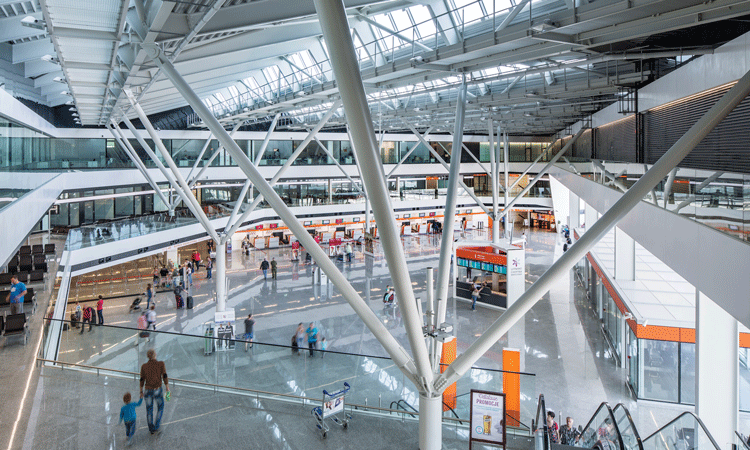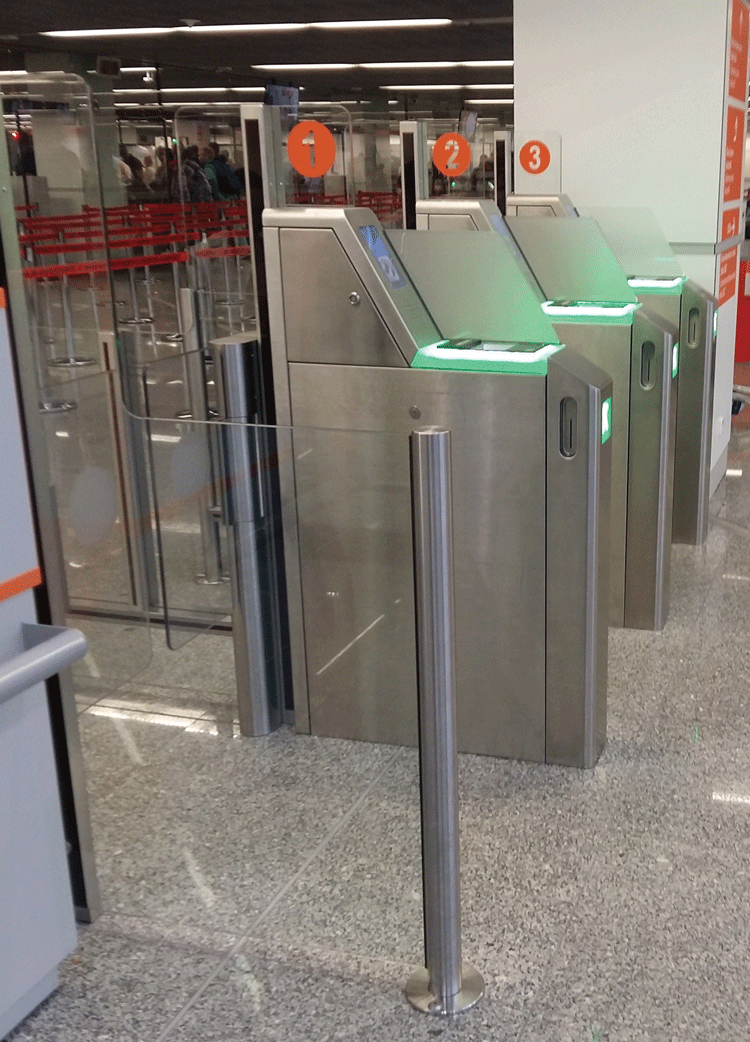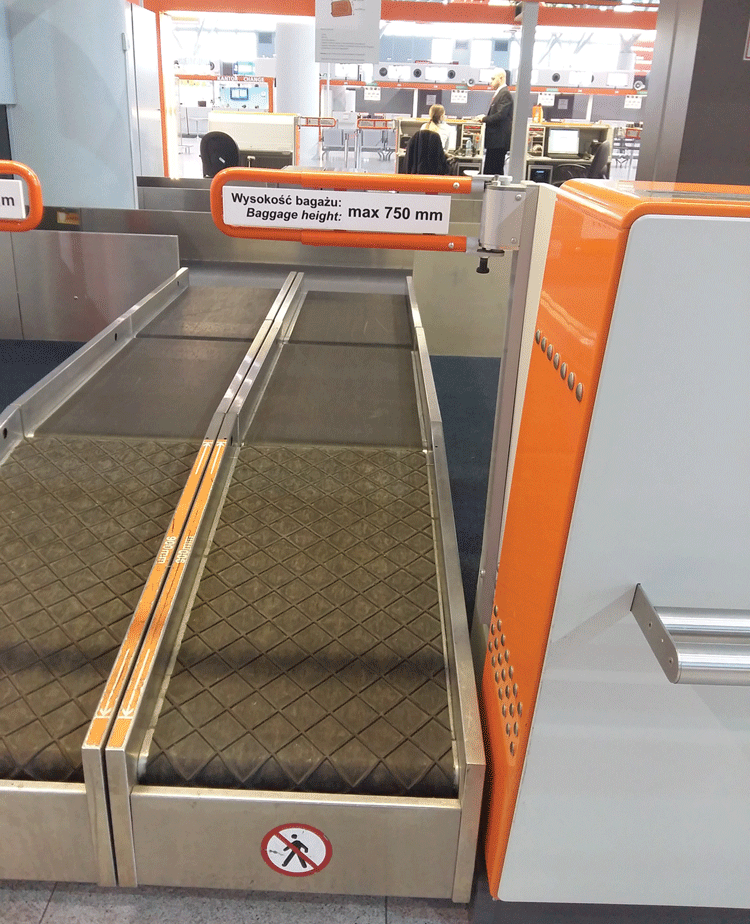Small steps to increased capacity
- Like
- Digg
- Del
- Tumblr
- VKontakte
- Buffer
- Love This
- Odnoklassniki
- Meneame
- Blogger
- Amazon
- Yahoo Mail
- Gmail
- AOL
- Newsvine
- HackerNews
- Evernote
- MySpace
- Mail.ru
- Viadeo
- Line
- Comments
- Yummly
- SMS
- Viber
- Telegram
- Subscribe
- Skype
- Facebook Messenger
- Kakao
- LiveJournal
- Yammer
- Edgar
- Fintel
- Mix
- Instapaper
- Copy Link
Posted: 15 February 2016 | Piotr Pawlisiak (Warsaw Chopin Airport) | No comments yet
You don’t need expensive investments in new infrastructure to increase airport capacity, says Warsaw Chopin Airport’s Terminal Product Specialist, Piotr Pawlisiak, he believes that employee creativity and the vision and acceptance of airport management boards will suffice.


According to the Japanese ‘kaizen’ philosophy of small improvements to everyday activities, each day we are searching for ideas of how to streamline and improve services for passengers departing and arriving at Warsaw Chopin Airport. And our experience to date shows that small steps can take you further. You don’t have to spend big money to expand the terminal capacity and maintain high standards of rendered services either.
We started the process of small changes at Warsaw Chopin Airport in 2011 with an analysis of the current situation and identification of major problems. We identified and separated four main groups of issues that distort the smoothness of operations and restrict terminal capacity. They include luggage handling, security checks, boarding management and passport control. We decided to focus on these issues and maximise their effectiveness, bearing budgetary constraints in mind. The bosses permitted us to act, provided that we would not tamper with airport infrastructure and passenger handling would still comply with all applicable laws and international standards.
Streamlining of luggage handling
The first step on the journey to streamlining was Warsaw Chopin Airport’s accession to the IATA Baggage Improvement Programme (BIP). The aim of the programme, which has been implemented since 2011 in 200 of the most important airports in the world, is to analyse and streamline the luggage handling procedures in air transport.
“Even the best handling procedures and high marks given by passengers do not relieve airports, airlines and other entities participating in the baggage handling process from the responsibility to constantly monitor the process and adjust procedures to changing technologies and passenger expectations.” Building on this statement, IATA (the International Air Transport Association) decided to start a programme which would result in baggage handling in airports becoming more passenger-friendly and comprehensible, as well as more reliable and less onerous for carriers.
Warsaw Chopin Airport first organised permanent cooperation of all stakeholders involved in the baggage handling process. We could then begin talking about the problems we encounter in our work. During the discussion we agreed that the smoothness of baggage check-in was majorly affected by failures of the baggage handling system (BHS). Oversized suitcases or loose rucksack straps would block the conveyor belt system and required frequent intervention by technicians.
In order to solve this problem, all check-in desks at Warsaw Chopin Airport were equipped with special limitations, making it physically impossible to put luggage of inadequate dimensions into the system (the height, length and width were all verified). The limitations were accompanied by boards which informed travellers about the admissible size of baggage and instructed how it should be placed on the conveyor belts. A passenger can find out when their luggage is oversized, how to properly place a bag/suitcase in a box and how to safely buckle loose straps.
The introduction of this simple solution led to the reduction of failures of the BHS system by over 80%. In the past, conveyor belts were getting blocked every day – now it happens once a fortnight, at the most.


The use of automatic gates allows for smooth entry into security check zones
Access and waiting zone for security checks
A simple solution to increase the smoothness of check-in in security control zones was the introduction of automatic gates at the boarding passes check. When they were installed, Warsaw Chopin Airport was the first airport in Poland to implement such a solution. The system allows for smooth and conflict-free entry of authorised persons to the security check zone and further on to the duty free zone. Previously, boarding passes were verified manually by the employees of Airport Security Guard. Now the check is totally automatic and does not require any staff involvement.
A passenger places the boarding pass over a reader and if everything is satisfactory the gate opens. If the boarding pass is invalid or improper, the entrance will not open. The gate reader recognises both printed and mobile boarding passes.
Following the introduction of automatic gates, the capacity of boarding pass check points has increased threefold and supervision over passenger traffic has improved, especially at business entrances, where movement of travellers unauthorised to use the fast track has been eliminated.
Additionally, Warsaw Chopin Airport is the first airport in the world to implement an automatic queue management system in front of the entry to the security check zone. The system comprises electronic turnstiles and queue length sensors. Ten sensors placed throughout the queuing zone constantly monitor the number of people waiting for the screening. The sensors are sensitive enough to precisely determine the length of the queue and thanks to that, the system automatically chooses the optimal configuration of gates expanding or shortening the passenger way through the zone.
The system changes the set gate configuration at a given moment, if such a need occurs, also with passengers in the queuing zone. It is possible to set six different configurations of a route, adjusted to current traffic and airport staff do not have to change the setting of individual turnstiles or belts marking the passage at any time.
Prioritising families and disabled travellers
The remote management system of the queuing zone also features the function of opening a separate entrance for passengers with reduced mobility and those travelling with children. This function, controlled with one switch, significantly streamlines the handling of passengers for whom we want to make the check-in process particularly effortless.
There is a separate path designated for all privileged passengers and a dedicated stand with a metal detection gate. The stand is also equipped with a device for controlling liquid content in bottles with capacity over 100ml, since, in line with new regulations, the limit does not apply to families with children and persons with certain medical recommendations.
It is worth mentioning that the airport provides free-of-charge access to pushchairs for passengers with small children. The strollers are available after passing the security check zone; they can be used within the whole passenger zone of the terminal and all piers with gates. Pushchairs are marked with a symbol of the elephant Fryderyka – Chopin Airport’s mascot.


By equipping check-in desks with special limitations, failures of the BHS system were reduced by over 80 per cent
Simultaneous check-in
An interesting solution was implemented in connecting areas, allowing simultaneous boarding and disembarking of passengers. At Warsaw Chopin Airport, exits to aircraft are paired, whereby one exit handles two neighbouring gate lounges. The layout causes restrictions of traffic capacity but it also provides an opportunity to use a relatively smaller space for checking in two flights simultaneously.
Until recently, a major limitation for simultaneous boarding and disembarking was the possibility of mixing passenger streams from different flights. To prevent this, passenger streams are separated with special tapes with an alarm system. The tapes mark the path to be followed by passengers of different flights. Should a passenger deviate from the path and touch the tape, a sound alarm is activated inside the connecting area as well as on check-in desks in the waiting room. This solution, approved by the Border Guard and Customs, allows us to effectively use available infrastructure while keeping appropriate safety levels and using adequate staff.
There is also a new idea for rearranging the passport control zone, which is obligatory for all passengers arriving to Warsaw from non-Schengen countries. Currently, eight control desks are placed along one line. Due to the width of the pier, which cannot be changed, it is not possible to increase the number of desks in the current layout. That is why we propose to rearrange the zone and place passport control desks perpendicularly to their current line, which is along the pier axis, which will double their number and, consequently, double the capacity of the whole zone. This solution is currently under consultation with the Border Guard, however, taking into account the rapidly growing traffic on intercontinental routes from and to Warsaw (i.e. to and from non-Schengen countries), the application of this solution is almost certain. Most likely, devices for reading biometric passports will also be installed at these checkpoints, which would lead to increasing the throughput even more.
The examples presented in this article demonstrate that an increase in airport capacity while maintaining the comfort of services from a passenger point-of-view is quite possible. Thanks to the implementation of several small projects without incurring great financial expenses, one can adapt a terminal to cope with increased passenger traffic, but at the same time maintain the highest quality of rendered services.


Issue
Related topics
Airport development, Biometrics, Border control, Engineering, Passenger experience and seamless travel, Passenger volumes, Security, Terminal operations


















